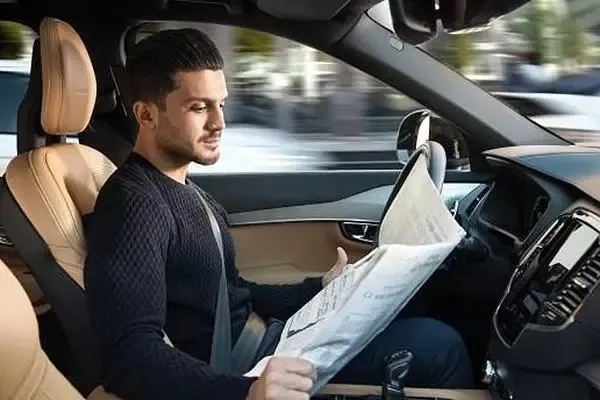*This article is reproduced from the autocarweekly official account.
Author: Shu Shu
Three questions to start with ——
Q1
According to the role allocation of driving automation systems in performing dynamic driving tasks and whether there are design operating conditions, autonomous driving vehicles are divided into six different levels from 0 to 5 based on the five elements. How should we understand the interval levels such as L2+, L2++, and L2.5 in the SAE automated driving classification system?
- A. Understand them in order based on the number of plus signs and the size of the number after the decimal point.
- B. Carefully check the configuration table provided by the manufacturer and understand them in order based on the number of configurations on the table.
- C. Cannot understand.
Q2
Why has L2 been implemented for such a long time, but L3 always falls short of expectations, and many manufacturers even directly promote L4?
- A. L3 level autonomous driving is too difficult to overcome technically.
- B. L4 is more useful for the market, so there is no need to develop L3.
- C. It is difficult to divide responsibilities for L3 level autonomous driving.
Q3
Are companies that develop L4 and L5 level autonomous driving capable and reliable endorsers to become accurate indicators for car buyers?
- A. Technological leadership means leading the times, and leading naturally deserves support.
- B. It is just talk without being installed on the car, so there is nothing to refer to.
- C. Support with reason, mainly depends on what is installed on the real car.
The answer to the first question is C, and it is impossible to understand the level intervals such as L2+, L2++, and L2.5.
If describing this type of level division as “starting with an open mouth and relying entirely on ad-libbing” is too absolute, it feels almost the same, especially when it comes to salespeople selling cars, as it becomes a matter of eloquence that can change the game.

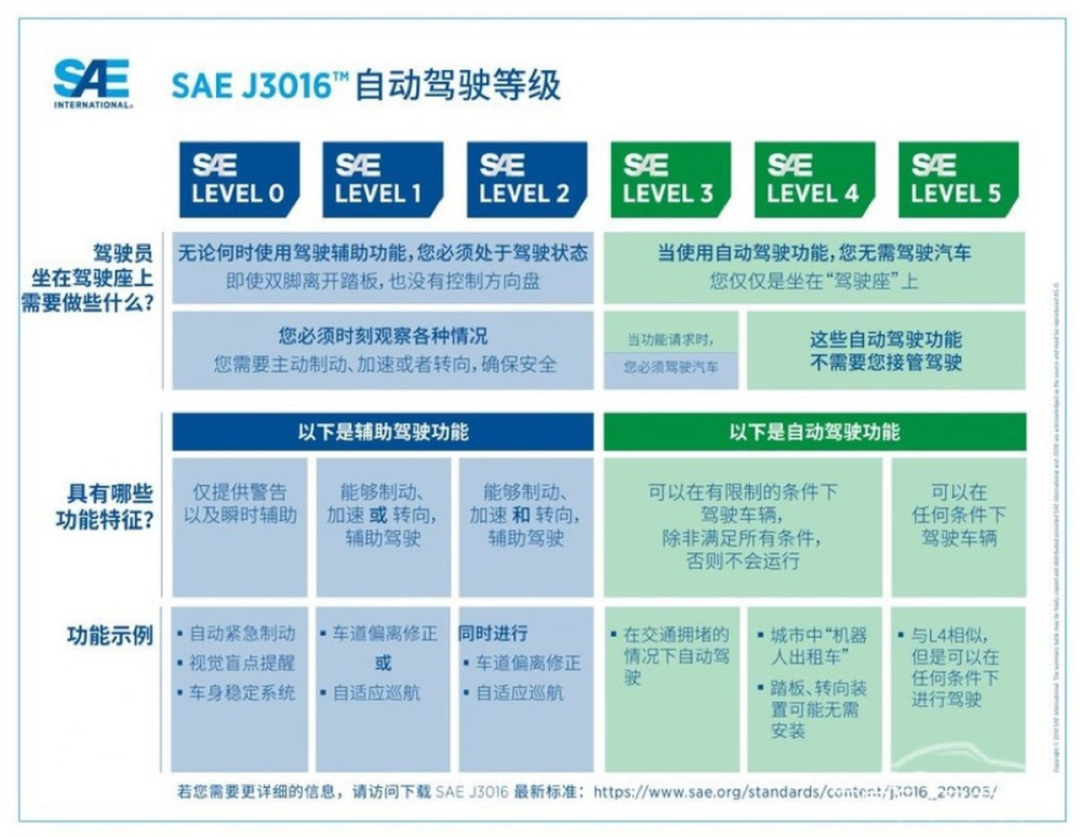
The above two pictures basically help us understand the specific division factors of L0-L5 (which have been talked about for several years).
- L0 is self-explanatory;
- Both L1 and L2 are for advanced driving assistance;
- L3 is conditional autonomous driving, which involves a process of mutual takeover between a person and a machine. When the machine requests the person to take over the vehicle, the person must accept the request;
- L4 is highly automated driving, where the system completes all driving operations, and in specific situations, the system sends response requests to the person, but the driver can choose not to respond;
- L5 is fully automated driving, where the car becomes a smart machine that can drive itself.Regulations do not tell you which functions are classified as L2 or added to achieve L3, hence some imaginative people come up with suffixes like +, ++, 2.5, and even 2.9 to make their products seem superior in advertising, exploiting the vague standards.
Reiterating an old point loudly, the cars for sale in China that claim to have the “automatic driving” or “intelligent driving” label have only reached L2 level in terms of regulatory standards, which is merely advanced driving assistance, no exceptions, no debate, just like Tesla.
Don’t listen to salesmen touting how many functions their product has, but see how the standards are defined to classify these functions. This is the same as not listening to what a man says, but instead seeing what he does.
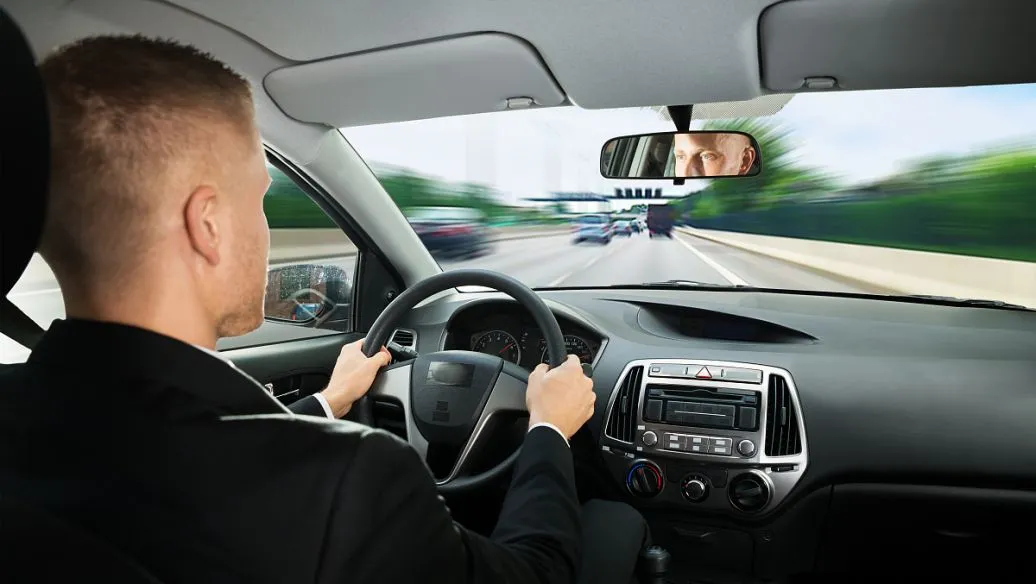
#
The answer to question two is C – L3 level of autonomous driving has not been fully realized due to the difficulty in determining subsequent responsibilities.
At the L3 level of autonomous driving, the vehicle is supposed to free the driver’s hands and eyes. The driver must take over the vehicle only when the vehicle encounters situations it cannot handle.
From the perspective of traffic regulations, we can only adhere to the literal meaning, rather than pursuing a state of true freedom. Furthermore, L3 level still involves the handover between the vehicle and the driver.

To give an example, if the manufacturer of Vehicle A claims that its vehicle has reached L3 level of autonomous driving and Zhang San buys it, while driving on the highway, there is a situation that the vehicle cannot handle and a warning is issued to Zhang San to take over immediately. However, Zhang San is still in a state of liberation and does not respond, causing an accident.
After the accident, Zhang San believed that the responsibility for the accident lies entirely with the Vehicle A manufacturer since their vehicle could not handle such a situation despite claiming L3 level of autonomous driving. Not only should the manufacturer bear all the responsibilities for the accident, but Zhang San also demanded a refund and compensation from the manufacturer for the vehicle owner’s rights.
However, the manufacturer believes that road travel is complex and variable, Zhang San shouldn’t have completely let go and, overall, the primary reason for the accident was Zhang San’s failure to take over the vehicle in time.##
How to say about this matter? Moreover, it’s difficult to make it clear when both sides argue, as there are a series of grey areas involved, including takeover time, takeover ability, vehicle issues, etc. Machine is always machine, while human is alive. It can be foreseen that Zhang San will be injured due to the accident and A manufacturer’s reputation will be damaged. In serious cases, it may even bankrupt.
We do not want to be Zhang San, and car manufacturers do not want to be A manufacturer.
Of course, there are also some companies that want to skip the development of L3 and directly research and develop L4 level, because there is no need for a driver to intervene in L4 level.
From the perspective of responsibility distribution, the possibility of the car manufacturer being “backfired” is even smaller. From a technical point of view, in an ideal state and on a closed road, the implementation of L4 level seems to be more feasible than L3 level, but all of these are only in an ideal state and at a technical level.
China’s road conditions are known to be complex in the world, and China’s traffic regulations are relatively complete. Essentially, the regulations do not allow hands-free driving.
When it comes to vehicle deployment, the vehicle scheme that requires human intervention at L3 level has not been implemented, and they want to jump to L4 level, which completely skips the long, boring, and difficult stage of product development and technology accumulation. If everyone thinks like this, then automatic driving may really only be limited to sprinting at the L3 level when it comes to vehicle deployment.
After all, between legalization and popularization, there is a long road of technology to be taken. Personally, I don’t believe that there are any shortcuts in the middle. Currently, no one has really claimed that L3 level automatic driving is available on mass-produced vehicles. Previously, the Audi A8 was the first vehicle claiming to achieve L3 level, but the program was announced to be abandoned in 2020.
I am also very curious about who will be the first to eat the crab, which must be a very creative and brave enterprise.

#
The answer to problem three is also C. As for companies that are developing L4 and L5 levels, we should maintain rational support. If we take this as an indicator of purchasing a car, consumers may easily encounter gaps or even have misunderstandings in the process of use.
Firstly, we respect and have expectations for all companies that are researching and developing autonomous driving, because we, as ordinary people, are those who raise questions. Especially for someone like me who is just writing, we are the so-called “Monday morning quarterbacks.” Those researchers are the ones who keep solving problems.
But are there many problems they faced? Yes, many. The biggest problem is that no matter how much they try, the solutions cannot really be implemented.The restrictions on traffic regulations in China are very strict, and the road conditions are very complicated. Even in the United States, where autonomous driving is at the forefront, Tesla’s latest FSD Beta V9.0 has been praised as “Smooth” by the media, but various problems have emerged as testing increases.
For example, after an automatic turn, the vehicle crashed into the green plants in the middle of the road, unable to recognize the snake-like track of a single track road, driving against traffic on a one-way street, changing lanes too late while crossing a solid line, turning left and heading towards a parking spot on the side of the road, self-confusion by vehicle at the intersection during left turns, and so on.
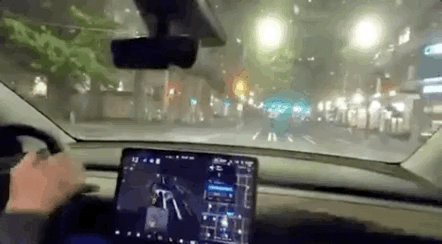
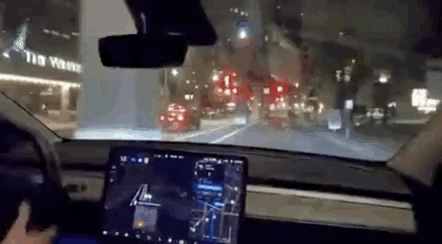
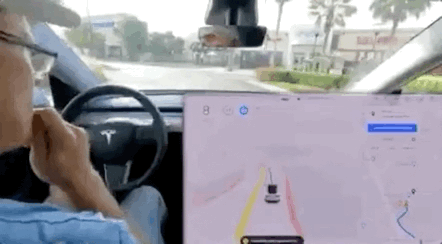
Even star companies like Tesla keep having large-scale crashes, and there are even larger accidents that cannot be explained behind them. Chinese autonomous driving development companies are even more overwhelmed. For ordinary consumers, many of the L4-level autonomous driving stories told by these companies are not told for you, but to impress the capital.
The difficulty of landing and the burning rate of money are unimaginable, and these companies even find it difficult to continue their research plans. Just look at Google and General Motors’ Cruise losing billions of dollars, and you can see.
Whether it’s maintaining a technology team, deploying hundreds of vehicles, purchasing expensive components for autonomous driving, or even some laser radar, single-line high-number products may be more expensive than a car. For these companies, the most important thing at present is to extend their lives, telling a short-term story that seems achievable, and working hard to finance the money in order to continue researching road solutions.
As ordinary consumers, we just need to focus on the final results. Currently, all technology companies that claim to have advanced technology and strong capital have not yet launched autonomous driving cars that can drive safely on ordinary roads. This is the current result. Do not overly believe fairy tales because they are from the perspective of capital and have little to do with us as individuals.
Moreover, the common problem with fairy tales is that the prince and princess live happily ever after, and whether they divorce after marriage is not mentioned.
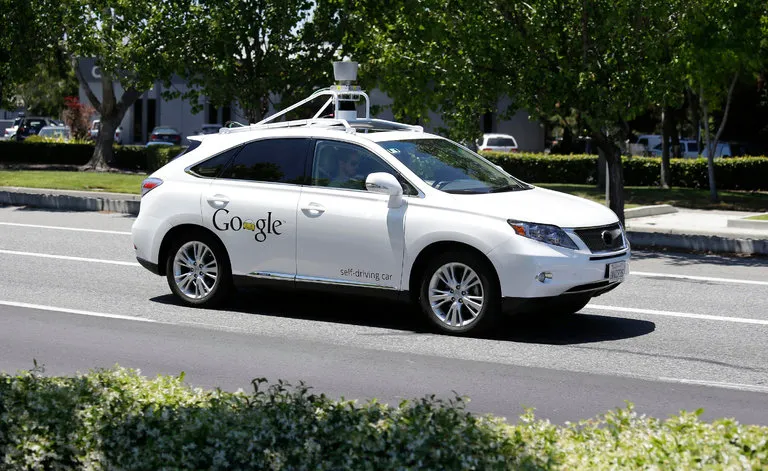 In 2018, John Krafcik, the CEO of Waymo, a self-driving car company acquired by Google, stated that “even in the next few decades, autonomous vehicles will not be everywhere, and fully self-driving cars are even more unlikely.”
In 2018, John Krafcik, the CEO of Waymo, a self-driving car company acquired by Google, stated that “even in the next few decades, autonomous vehicles will not be everywhere, and fully self-driving cars are even more unlikely.”
To be honest, I personally only see L3 (Level 3) full-scale popularization and L4 (Level 4) regional popularity possible within my lifetime.
As for the “joyful” atmosphere created by some Chinese L4 autonomous driving companies in recent years, with scenes that seem to suggest we won’t need to use our hands and feet to drive in ten or twenty years, I just smile it off. Because that story wasn’t really told to me.
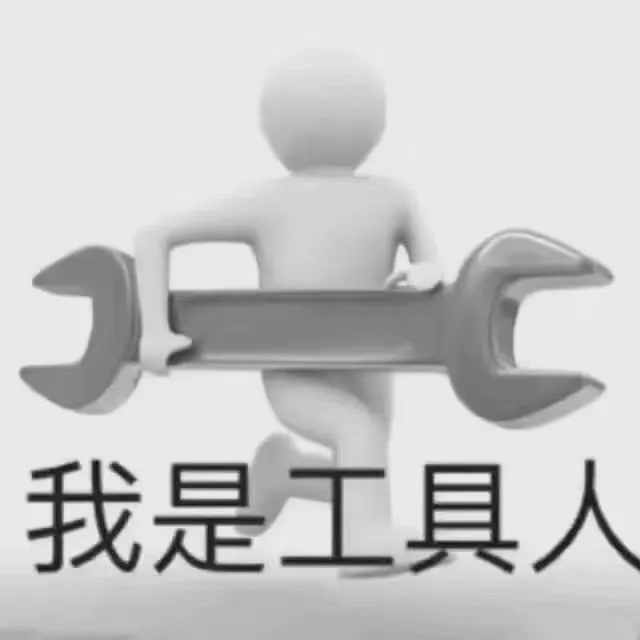
#
I often think of a question that cannot be answered with ABC options and a correct answer. That is, do we really need autonomous driving?
From a policy perspective, the autonomous driving industry has been elevated to a national strategic level in various countries.
In May 2020, Japan’s “Road Transport Vehicle Act (amended)” implemented clear requirements for the safety of L3 autonomous driving, allowing human drivers to use their phones or watch in-car television during autonomous driving only if they can quickly switch back to manual driving. In June 2019, the state of Florida, USA, became the first in the world to legalize autonomous driving on the road.
In February 2020, the National Development and Reform Commission and 11 other ministries jointly issued the “Intelligent Vehicle Innovation Development Strategy”, proposing to achieve the scale production of conditionally autonomous driving intelligent cars by 2025, and the market application of highly autonomous driving intelligent cars under specific environments. Looking ahead to 2035 to 2050, China will comprehensively build a standard smart car system to gradually realize the vision of a smart car power.
However, I personally believe that autonomous driving is not the optimal solution for personal transportation, but rather it is born for commercialization.
The essence of autonomous driving is that it doesn’t require human drivers. Cars are the most common tools we use for daily transportation. When taxis no longer require human drivers, the cost would only consist of fuel (or electricity) and vehicle maintenance fees, which would save a great deal of labor costs.
Similarly, when takeout food is automatically delivered inside a car, and logistics are transported north and south automatically after loading onto a vehicle, the application to any scenario that requires human driving looks like an immovable cost.
Of course, only by achieving large-scale commercialization can we absorb the costs of autonomous driving in the research and development, testing, and manufacturing processes, and this is a circle that must eventually be closed.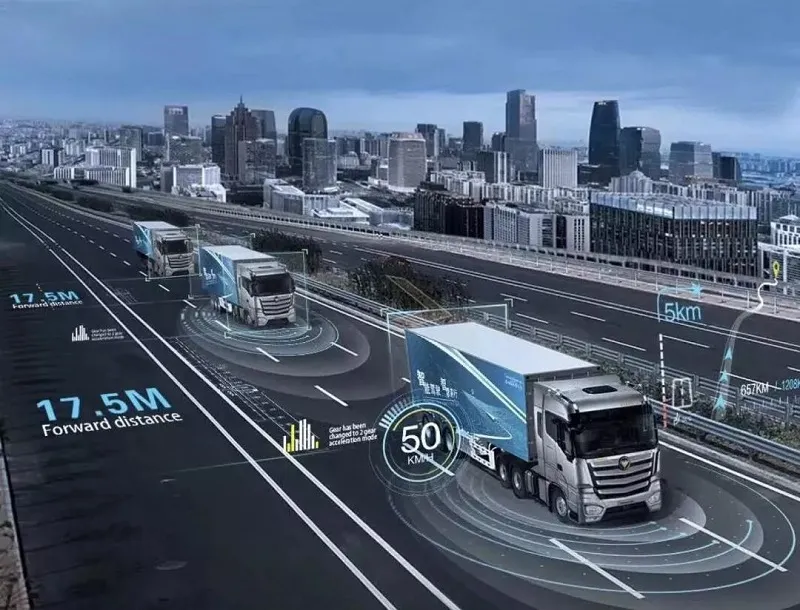
However, from a humanitarian perspective and considering the current level of autonomous driving technology, we still cannot trust or rely too easily on autonomous driving.
In the book “Shishuo Xinyu. Paitiao”, it was once said: “Blind men ride blind horses and approach deep pools in the middle of the night,” which is used to describe situations that are very dangerous or face extreme danger without awareness.
For us who currently only have Level 2 autonomous driving available, Level 3 is not yet in mass production, and we must still be in the car to control the vehicle, the best way to avoid being in a passive situation is to not blindly ride blind horses and not relax our eyes and hands on the steering wheel. After all, there are countless roads and safety comes first. If driving is irregular, loved ones will be in tears.
As for whether we really need autonomous driving, I think that when I am 55 years old in 2050 and own a car or ride in a car, I still hope to have absolute control over it, which can be determined by pressing on the brake pedal, rather than left to the computer’s own judgment.
This article is a translation by ChatGPT of a Chinese report from 42HOW. If you have any questions about it, please email bd@42how.com.
